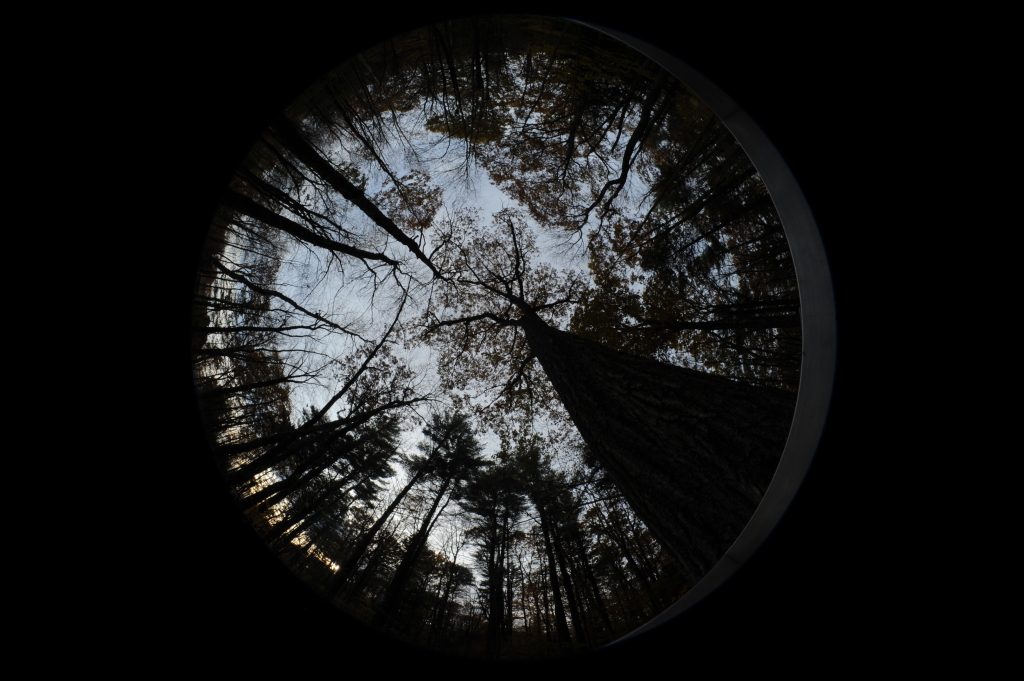A DOMINANT TREE
In forestry, the pros talk about trees as dominant and sub-dominant, as they assess the ecological rules of the game in a stand. Which tree gets most of the light, and determines how much the others around it can grow? That is the dominant tree. Or dom, as its called in the lingo. The 100-year old red oak I am writing about at the Harvard Forest in my forthcoming book Witness Tree, is a dominant tree.
Here’s a look at it through the amazing photography of Liza Nicoll, research assistant here at the Harvard Forest, using a fish eye lens.

My oak is about a century old, and as this photo shows, it dominates its grove. Photo by Liza Nicoll. Camera courtesy Aaron Ellison.
We will take some more of these photos in deep winter, and in spring as the leaves start to come out. We’ll use the images to calculate the oak’s leaf area index, to figure out how much carbon the big oak packs away.
But they are also just beautiful images, worth the proverbial 1,000 words as to what it means to be a dominant tree.
In the next several weeks I’ll be taking my tree’s measure through the eyes of lots of different people. A carpenter. A forester. A farmer. An ecologist. A mycologist. A dendrologist. A wildlife biologist. A historian. Even the local tree warden of Petersham, MA.
The Witness Tree Cam, as I call it, also arrived today, courtesy of the Knight Science Journalism Program at MIT. We’re going to put it up in the forest under the big oak to watch its canopy continuously through the seasons, and put the images on the Web at this site. A wildlife camera is also coming soon, courtesy of David Foster, director of the Harvard Forest.

Leave a Reply